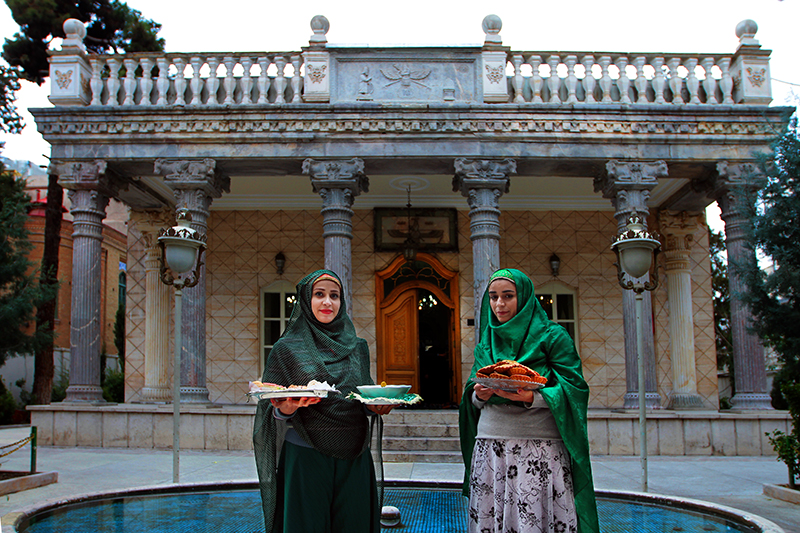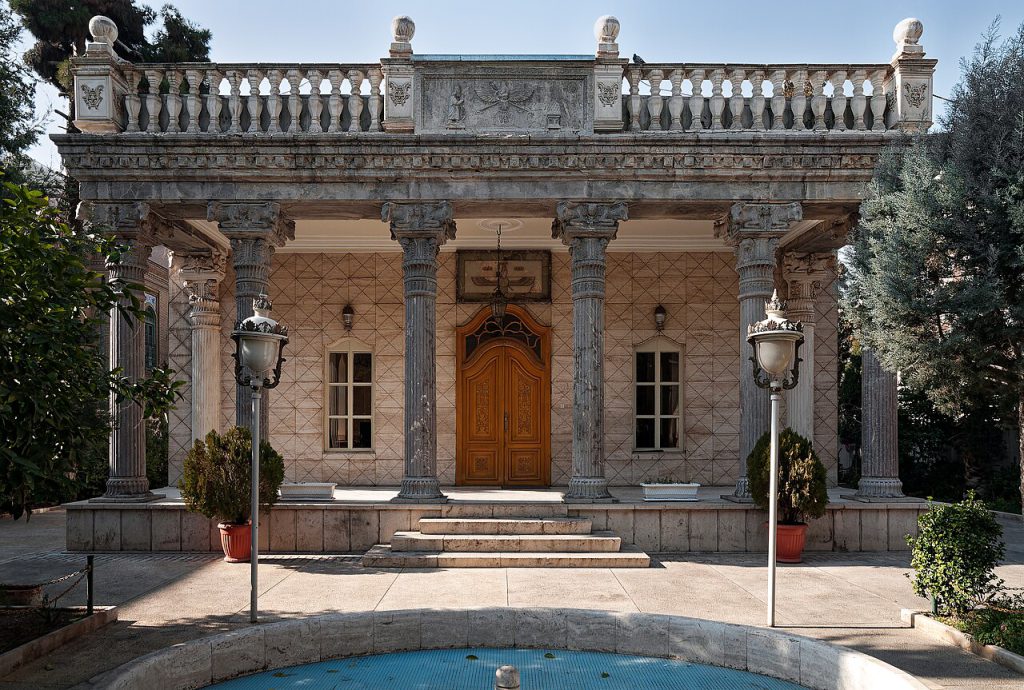Table of Contents
Adorian Fire Temple stands as the sole beacon of Zoroastrian worship in Tehran, preserving the ancient traditions of one of the world’s oldest religions. This sacred space is where Zoroastrians gather to connect with their faith, reciting the Avesta, their holy scriptures, before the ever-burning fire. The temple, rooted in the Qajar era, is more than just a place of worship; it is a living testament to the endurance of Zoroastrian culture.
At the Adorian Fire Temple, the faithful gather to commune with the divine, their voices echoing through the ornate halls as they recite the revered Avesta, the primary collection of Zoroastrian texts. The intricate architectural design, with its six columns adorned with cattle-head capitals and a tranquil courtyard surrounding a serene pond, reflects the deep-rooted symbolism and spirituality that permeates this hallowed ground. And at the very heart of this sanctuary, a flame has burned steadily since 1917, a testament to the unwavering dedication of the Zoroastrian community.
Adorian Fire Temple History
The Adorian Fire Temple stands as a testament to the vision and dedication of Keikhosrow Shahrokh, a pivotal figure in early 20th-century Iran. Known affectionately as “Lord Khosrow,” Shahrokh’s contributions to Iranian society were vast, ranging from the creation of Iran’s nationwide telephone network to the establishment of the Majlis Library. His commitment to the Zoroastrian community was particularly profound. As the head of the Tehran Zoroastrian Association, he spearheaded the construction of the Adorian Fire Temple. The temple’s foundation stone was laid in 1914, with substantial support from Zoroastrians in both Iran and India, notably Bahramji Bikaji of the Indian Parsi Association. After three years of construction, the temple officially opened its doors on November 24, 1917.
The sacred fire that burns within the Adorian Fire Temple was meticulously transported from Yazd to Tehran by three devoted priests, Ardeshir Rostami, Rashid Sheid, and Bahram Soroush. Their journey spanned 25 days, culminating in a ceremony during the Azargan festival on November 30, 1917. Over the years, the temple has been a center for various Zoroastrian ceremonies, including Vaj Yasht and Ordibehesht prayers, as well as memorials and weddings. A significant renovation in 1966 transformed the temple’s exterior, replacing its brick facade with marble, a project funded by Shirmard Farahmand and Fereydoun Farahmand. This marble facade, a tribute to Shirmard Farahmand, continues to be a defining feature of the temple today.
Adorian Fire Temple Architecture
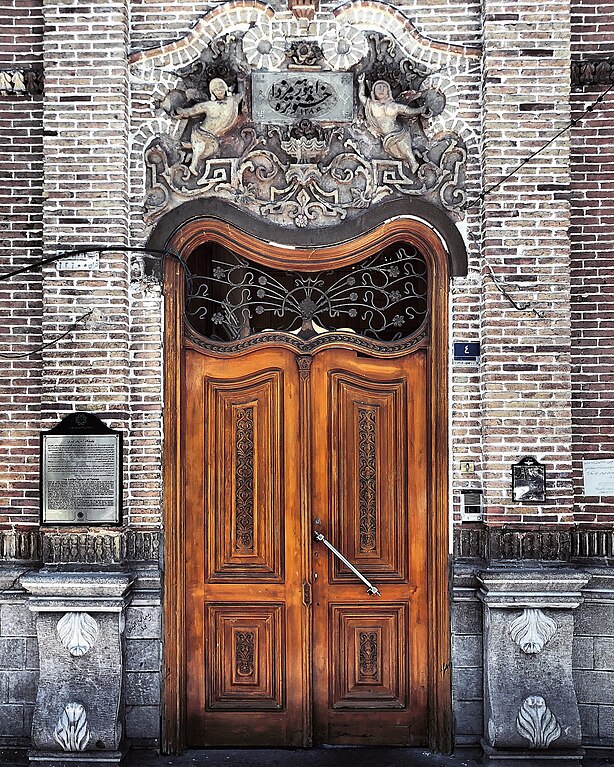
The Adorian Fire Temple’s architecture reflects a blend of traditional and symbolic elements that resonate with Zoroastrian culture. Its façade, adorned with intricate brickwork, features a marble inscription held by two angelic figures, proclaiming “For the Pleasure of Ahura Mazda.” This Qajarid-era temple opens into a courtyard dominated by a large pool, a design element reminiscent of the fire temples in Yazd. The temple’s entrance is flanked by an edifice adorned with white stones and six stately columns, each topped with statues of cows symbolizing livelihood and productivity. The columns are also decorated with motifs of grape leaves and fruits, which celebrate happiness in Zoroastrian culture.
Inside the temple, the architectural grandeur continues with a four-sided room at the center of the hall, surrounded by glass and low walls. This room houses the sacred fire, kept in a copper container, accessible only to the temple’s guardians. The fire, which was ceremoniously brought from Yazd in 1878, remains a focal point of the temple’s rituals. The hall’s seating is arranged for prayers, with the Mobad positioned to the left. The interior is richly decorated with stucco works in gold and copper tones, adding a touch of elegance to the sacred space. The northern façade, originally brickwork, was sheathed in marble in 1967, further enhancing the temple’s majestic appearance.
Adorian Fire Temple Religious Significance
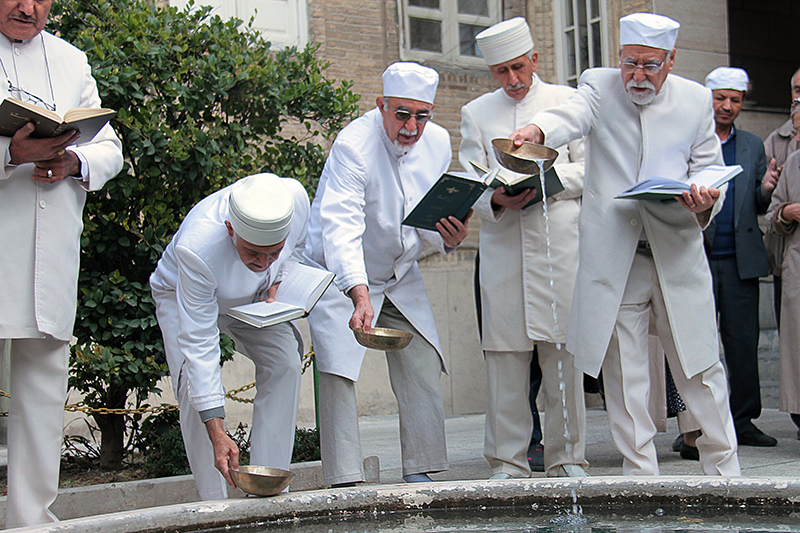
The Adorian Fire Temple, often referred to by various names such as the Zoroastrian Mosque and Tehran Fire Temple, serves as a vital spiritual hub for Zoroastrians. Its name, derived from “Adar,” meaning fire, signifies its role as a sanctuary where the sacred flame, known as “Spandineh,” is preserved. This fire is not just a physical element; it embodies purity and holiness, central to Zoroastrian worship. The temple houses the revered “Bahram” fire, one of the highest types of sacred flames in Zoroastrianism, which is integral to various rituals and ceremonies. This connection to fire underscores the temple’s significance as a place of worship and community gathering, where followers engage in prayers and rituals that honor their ancient beliefs.
The temple complex is meticulously designed, featuring a prayer hall adorned with vibrant carpets and intricate plasterwork, creating an inviting atmosphere for worshippers. At the heart of the temple lies the sacred fire, housed in a beautifully crafted copper vessel, visible through thick glass panels. This arrangement allows worshippers to connect with the divine while observing the eternal flame. The temple also includes spaces for mourning ceremonies and communal gatherings, emphasizing its role as a center for both spiritual and social activities within the Zoroastrian community. Through its architecture and the sacred fire it maintains, the Adorian Fire Temple stands as a testament to the enduring legacy of Zoroastrian faith and culture.
Adorian Fire Temple Complex: The Different Sections
The Main Hall and Sacred Fire
Entering the Adorian Fire Temple, visitors are greeted by a stunning main hall that exudes a sense of reverence and tranquility. This spacious area is adorned with intricate decorations, including vibrant rugs and religious inscriptions that tell stories of faith and tradition. The hall features pointed arched windows, beautifully laced with iron grates, allowing soft light to filter through and illuminate the sacred space.
At the heart of this hall lies the sacred fire, a vital element of Zoroastrian worship, housed within a square chamber that symbolizes the four essential elements: earth, fire, air, and water. This fire, brought from Yazd, is not just a source of light but a profound representation of purity and divine presence, making the atmosphere deeply spiritual for the worshippers who gather here.
Additional Features of the Temple Complex
Beyond the main hall, the Adorian Fire Temple complex boasts several functional spaces that enhance the worship experience. Among these are the ‘Yasht’ rooms, designed for special prayers and community gatherings, equipped with tables and chairs to accommodate worshippers comfortably. The temple also includes a well-appointed kitchen, complete with bread ovens and rice cookers, essential for preparing meals during significant ceremonies. The architectural layout reflects a blend of historical influences, with structures dating back to the Qajar era and the Pahlavi dynasty, showcasing the temple’s rich heritage. Each corner of the complex serves a purpose, inviting visitors to engage with the traditions of Zoroastrianism while appreciating the beauty of this sacred site.
How to Get to Adorian Fire Temple
Tehran public transportation is highly recommended to visit the Adorian Fire Temple due to the limited parking options in the area.
By Bus
You can catch a bus that travels along Jomhouri Avenue. Get off at the intersection of Hafez and Jomhouri, and a brief walk will lead you to 30th Tir Street, where the temple is located. This combination of public transport options makes your journey both efficient and enjoyable, allowing you to soak in the vibrant atmosphere of Tehran.
By Metro
The metro system in Tehran is a convenient choice; simply take Line 1 and disembark at Saadi Station. From there, it’s just a 13-minute stroll along Jomhouri Avenue to reach the temple.
Working Hours of Adorian Fire Temple
The Adorian Fire Temple welcomes visitors from Saturday to Wednesday, with doors open from 8:30 AM to 1:00 PM. If you’re planning a visit on Thursday, you’ll have a slightly shorter window, as the temple operates from 8:30 AM to 12:00 PM.
This schedule allows ample time to explore the temple’s spiritual ambiance, offering a peaceful experience during the quieter morning hours. Whether you visit midweek or on a Thursday, ensure you arrive early to fully immerse yourself in the temple’s rich history and serene atmosphere.
Recommended Sightseeing Time of Adorian Fire Temple
The Adorian Fire Temple is accessible year-round, making it a destination for any season. Whether you’re visiting in the warmth of summer or the crispness of winter, the temple’s timeless appeal remains inviting.
A visit typically takes about an hour, which is just enough time to absorb the spiritual essence and historical significance of the site without feeling rushed. This duration allows for a thoughtful exploration, letting you appreciate the temple’s serene atmosphere and intricate details at a comfortable pace.
Other Attractions Near Adorian Fire Temple
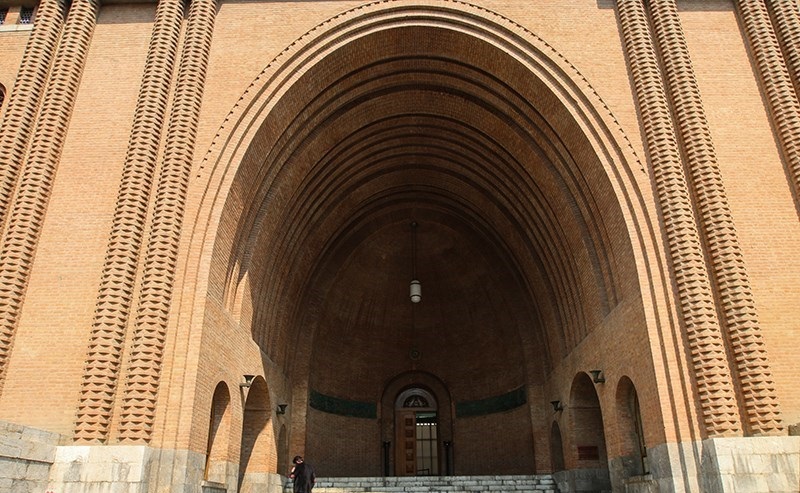
30th Tir Street
After exploring the exhibits, step outside to experience the local culture firsthand.
30th Tir Street is lined with vendors serving an array of traditional street foods, where you can savor unique flavors and enjoy the lively atmosphere that makes this area so special.
FAQs about Adorian Fire Temple
Q1: What is the longest burning fire in Iran?
A1: The Behram Fire has been burning without stopping since 470 AD, making it the longest-burning holy flame in Iran. It has been moved several times, arriving in Yazd in 1474 and finally being placed in this building in 1940.
Q2: Who is the fire God in Zoroastrianism?
A2: The word “ātar” meant both “fire” and “Fire,” with every instance of fire seen as a representation of the deity.
Q3: Does Parsi worship fire?
A3: Though Parsis have sometimes been called fire-worshippers, the definition is incorrect. We do not worship fire, we worship the one God Ahura Mazda through His creation; the natural elements we hold to be sacred. Fire is a focus for worship, its brightness and purity being the physical representation of light and truth.
Q4: What is a Parsi temple called?
A4: A fire temple, also known as Agiary, Atash Kadeh, Atashgah, or Dar-e Mehr, is the place of worship for followers of Zoroastrianism, the ancient religion of Iran (Persia).
Q5: Is Zoroaster a prophet of Allah?
A5: The Ahmadiyya Community regards Zoroaster as a Prophet and interprets the concepts of the all-good Ahura Mazda and the evil Ahriman as symbolic of the coexistence of good and evil forces, which allow humans to exercise free will.
Last Words: Discover the Best of Adorian Fire Temple with a Customized Tour
The Adorian Fire Temple is the only Zoroastrian temple in Tehran, preserving ancient Zoroastrian traditions. It serves as a gathering place for Zoroastrians to practice their faith, reading their holy scriptures, the Avesta, in front of a continuously burning flame. Built during the Qajar era, the temple is a symbol of Zoroastrian culture’s resilience. Since 1917, a flame has been burning at the temple, showing the strong commitment of the Zoroastrian community.
To truly immerse yourself in the wonders of the Adorian Fire Temple and the rich cultural tapestry of Iran, consider embarking on one of our Customized tours. At ToIranTour, we specialize in crafting Iran tours and travel packages that cater to your unique preferences. Whether you’re fascinated by ancient history, architectural marvels, or spiritual sites, we design Iran Tours that resonate with your passions.
Our team is here to help you create memories that will last a lifetime, providing expert guidance and support every step of the way.

